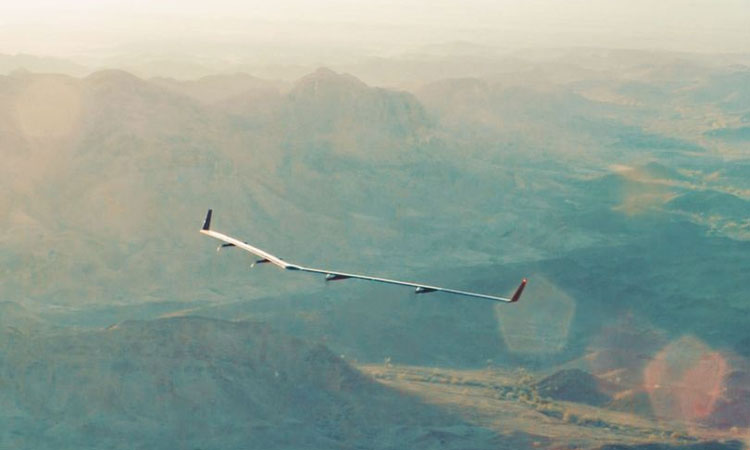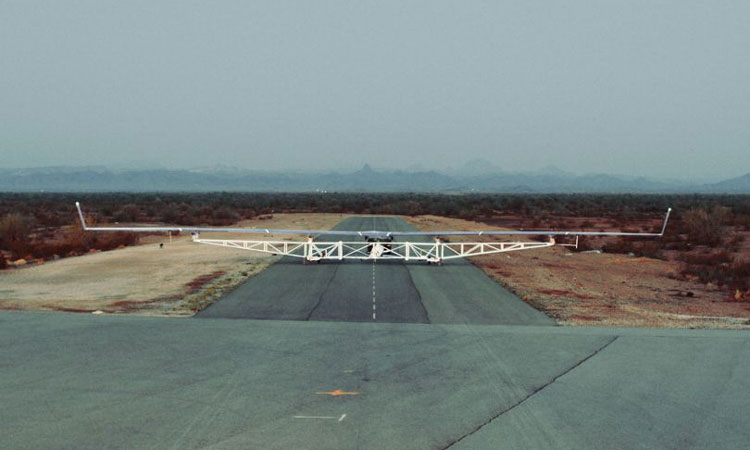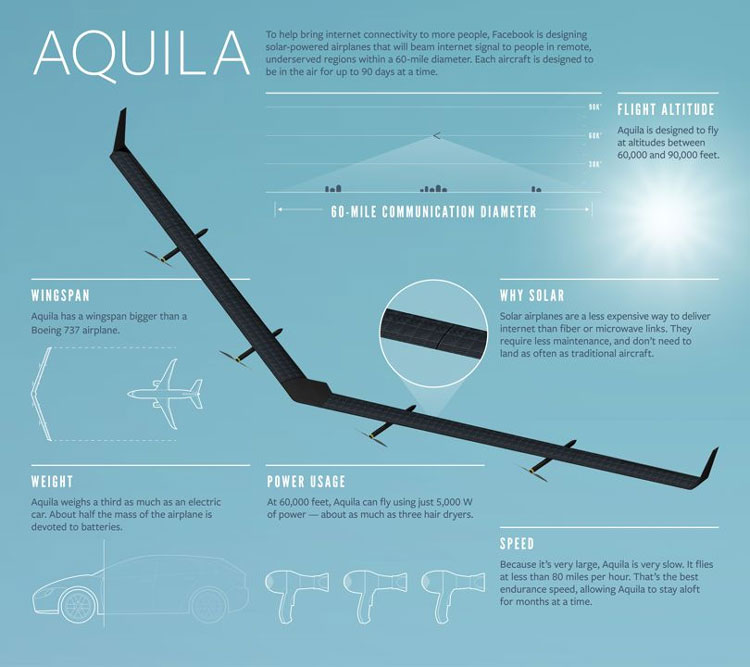Aquila Drone Completes Its Second Flight
In the bid to provide internet to even the most remote locations of the globe, Facebook has reached its latest milestone.
Its Connectivity Lab has completed the second full-scale test flight of the firm’s Aquila high-altitude aircraft, almost a year since the first, and, more importantly, it made its first safe landing following a crash last year that saw it take severe damage under windy conditions.
Aquila is a solar-powered plane designed to ‘beam’ connectivity to places that can’t support the typical infrastructure needed to provide web connections. When complete, it will be able to circle a region up to 60m in diameter, beaming connectivity from an altitude of more than 6,000ft using laser communications and millimeter wave systems. Aquila is designed to be hyper-efficient, so it can fly for up to three months at a time.
The aircraft has the wingspan of an airliner, but at cruising speed it will consume only 5,000W — the same amount as three hairdryers, or a high-end microwave.
Facebook yesterday announced the drone’s successful May 22 flight, detailing modifications made to stabilize the plane under challenging conditions and confirming that, “the aircraft flew for 1 hour and 46 minutes, and landed perfectly on our prepared landing site.”
“Internet access can offer life-changing opportunities and experiences to all of us, but there are still 4 billion people without it,” said Jay Parikh, Facebook’s global head of engineering and infrastructure in a blog post.
The first functional check last July was a low-altitude flight and the aircraft flew for more than 90 minutes — three times longer than Facebook said it had originally planned. Parikh continued that this meant his team could verify and check aerodynamics, batteries, control systems, and crew training.
However, the company is realistic about the challenges Aquila will face. For example, to reach its goal of being able to fly over a remote region and deliver connectivity for up to three months at time, it will need to break the world record for solar-powered unmanned flight, which currently stands at two weeks.
“This will require significant advancements in science and engineering to achieve. It will also require us to work closely with operators, governments and other partners to deploy these aircraft in the regions where they’ll be most effective.
“But we believe this work has never been more important. New technologies like Aquila have the potential to bring access, voice and opportunity to billions of people around the world, and do so faster and more cost-effectively than has ever been possible before,” concluded Parikh.





Comments are closed, but trackbacks and pingbacks are open.